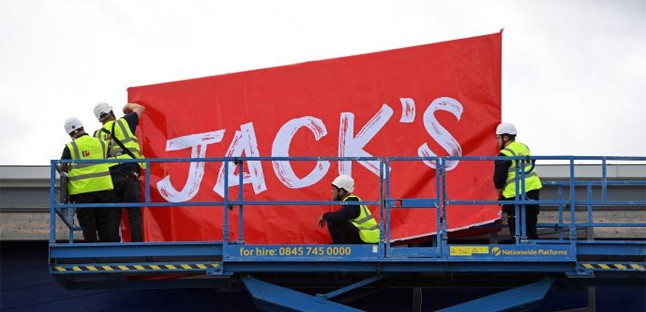Latest posts
What’s going on at parkrun?
Virtue-signalling all the way to the bank
Bud Light: brand purpose or virtue-signalling?
The Coddling of the American Mind, by Greg Lukianoff and Jonathan Haidt
Belonging, by Owen Eastwood
Such a simple thing
The Long Win, and The Scout Mindset
The Cult of We by Eliot Brown and Maureen Farrell
Coffee and covid modelling
John Lewis: so right-on it’s wrong
By theme
Marketing strategy
Insight & metrics
Innovation & inspiration
Brand & positioning
Marketing communications
Business purpose
Leadership
By industry sector
Financial services
Retail
FMCG
Technology & start-ups
Consumer services
Business to business
Other sectors
By type
Books
Comment
Quotes
Thought leadership
Tesco’s launch of Jack’s last week is a long way from the old Tesco mantra, which went something like: if in doubt err on the side of the customer. Tesco could claim it is to meet a consumer need, a grocery store with a much tighter range and consequently lower prices. But this doesn’t stack up, because Tesco’s buying power is much greater than Jack’s could have alone, so it could operate those stores without calling them something different. Jack’s is a competitive response to discounters Aldi and Lidl. Where does that leave brand Tesco – the expensive one? Having a portfolio of brands seems appealing, until you reflect that associating one brand strongly with one feature, especially price, tends to diminish or even remove that feature for your other brands.
Brands should be used sparingly. They are meaningless unless communicated and supported, and that’s expensive to do. The rationale should be external not internal – necessary for the customer, rather than because the business thinks it can benefit. Creating brands may seem like a smart way to justify different prices, or to signal customisation to a different target market. But if the prospective customer has to work to decode the brands, they’re a hindrance to purchase, not a help. If that decoding reveals that the difference is superficial – or a cover for no meaningful difference at all – the customer is unlikely to be impressed.
Who does this well? The world of fashion, being all about image and branding, uses diffusion lines, or sub-brands, to extend to lower price points without diluting the original. Armani Collezione, Emporio Armani and Armani Exchange are clearly not real Italian high fashion, but real enough to someone who can’t afford Armani black. The prices and the very different retail environments reinforce each other so there’s no chance of confusion. Unlike Tesco, parent Armani is comfortable being the expensive one.
Levi’s is at it too, but it’s confusing. Levi’s used to be simple. Now, even classic Levi’s come in dozens of finishes and colours. The website is a perfect illustration of the paradox of choice. Nothing so mundane as Dark Blue, and to my eye Tumbled Rigid and Yokohama Nights look so similar.
Then there are the multiple brands. I know what Levi Strauss is, but Wellthread, Outerknown and Supima? Yes, all on the same jeans. Diligent research will reveal that Wellthread is the name Levi’s have given to their sustainability initiatives, some of which have their own names too, like Levi’s “Water<Less” fabric. By naming it, however, they create a barrier. Tell me you are adopting good working practices, and I might register the fact. But what is this extra label attached to my jeans? I don’t know and I probably don’t care.
Brands are supposed to simplify choice, by making clear what you can expect. If the brand proposition also guides internal decision-making, expectations will be met and customers will be satisfied. That usually enables a branded product to command a price premium. But it doesn’t work the other way round: branding a thing doesn’t automatically make it worth paying more for. Levi’s are still Levi’s. Tesco is still Tesco. And Jack’s? So far, that’s nothing much.
Latest posts
What’s going on at parkrun?
Virtue-signalling all the way to the bank
Bud Light: brand purpose or virtue-signalling?
The Coddling of the American Mind, by Greg Lukianoff and Jonathan Haidt
Belonging, by Owen Eastwood
Such a simple thing
The Long Win, and The Scout Mindset
The Cult of We by Eliot Brown and Maureen Farrell
Coffee and covid modelling
John Lewis: so right-on it’s wrong
By theme
Marketing strategy
Insight & metrics
Innovation & inspiration
Brand & positioning
Marketing communications
Business purpose
Leadership
By industry sector
Financial services
Retail
FMCG
Technology & start-ups
Consumer services
Business to business
Other sectors
By type
Books
Comment
Quotes
Thought leadership
